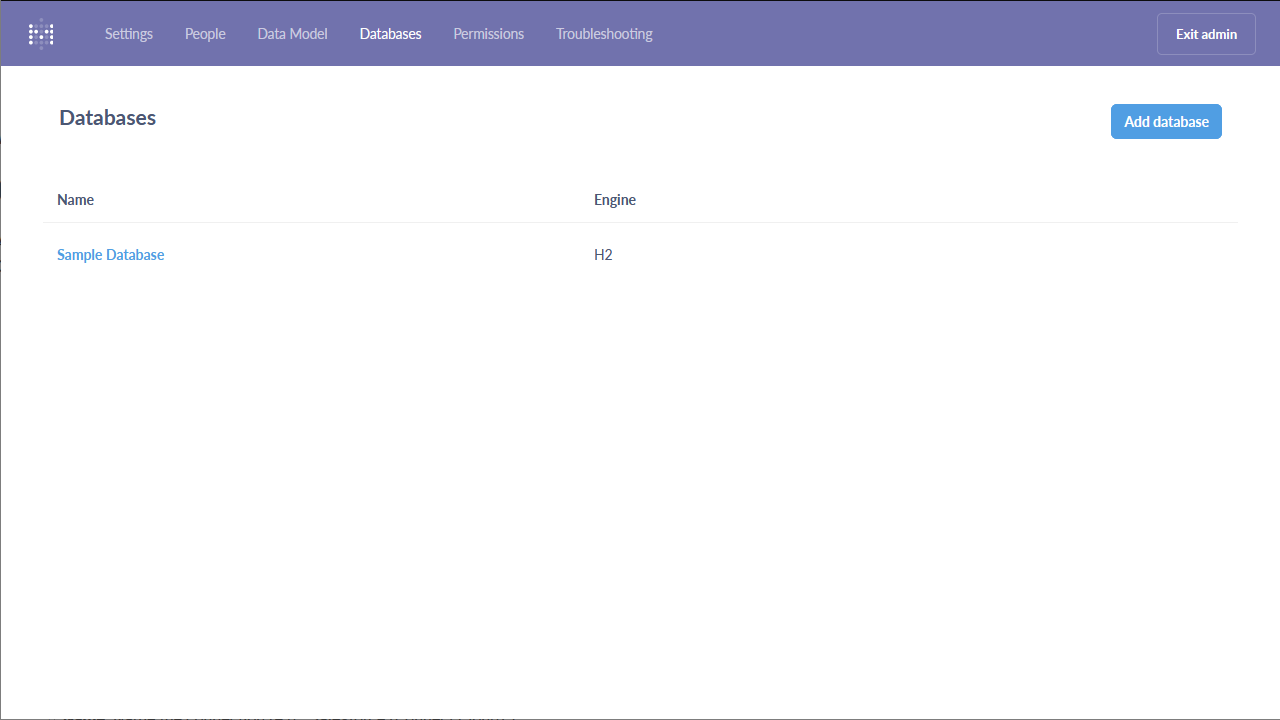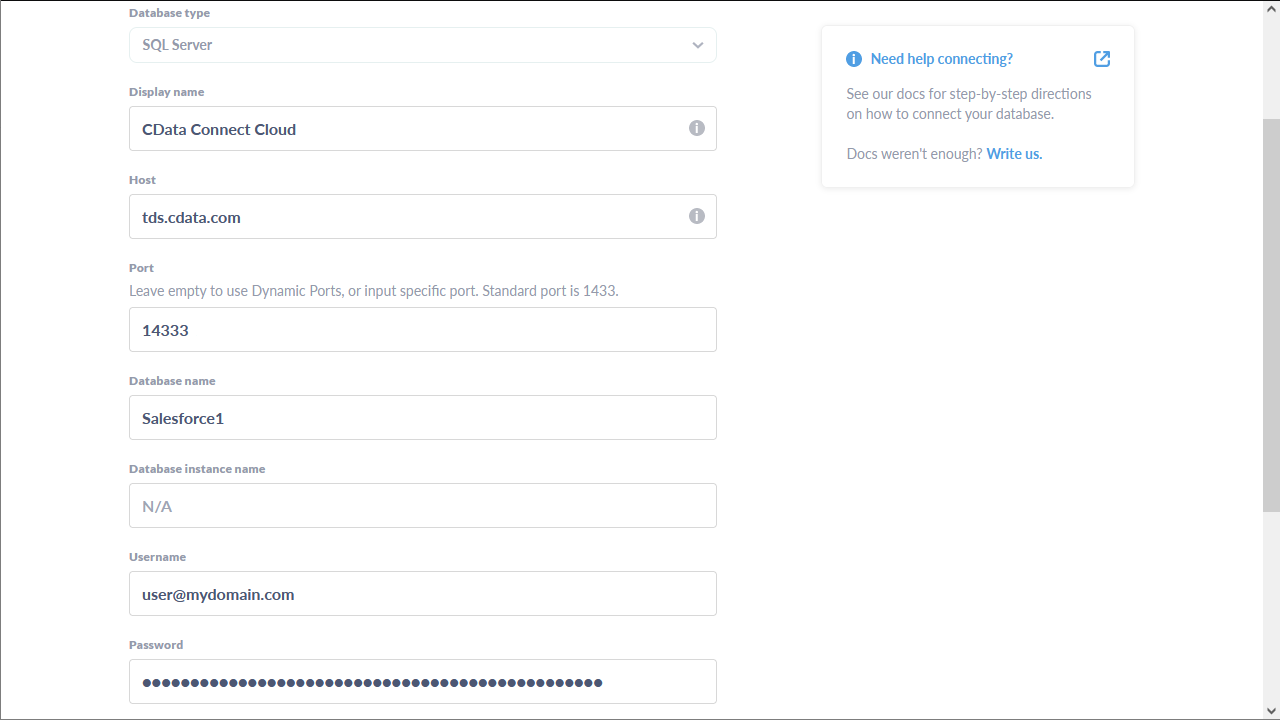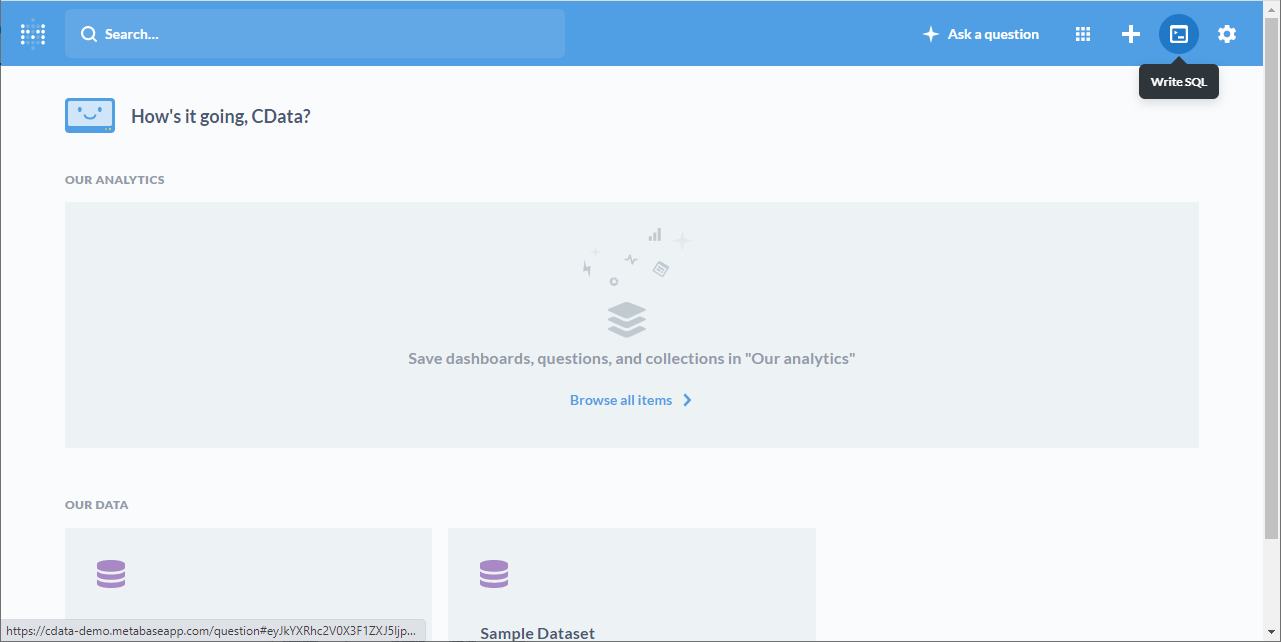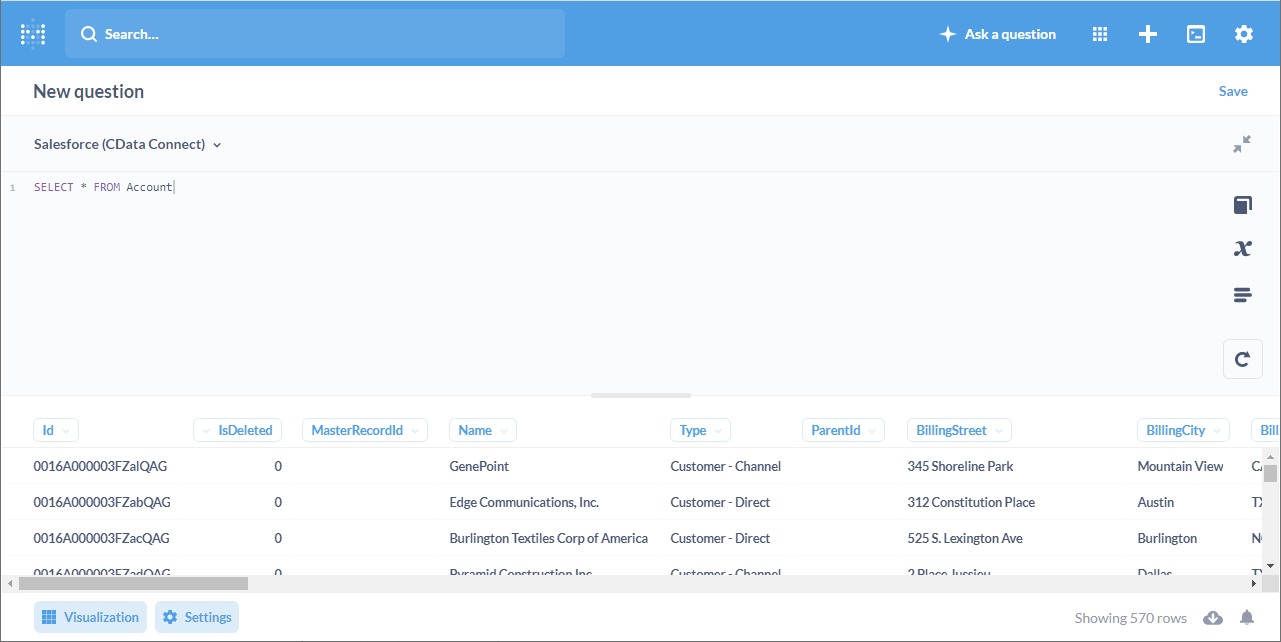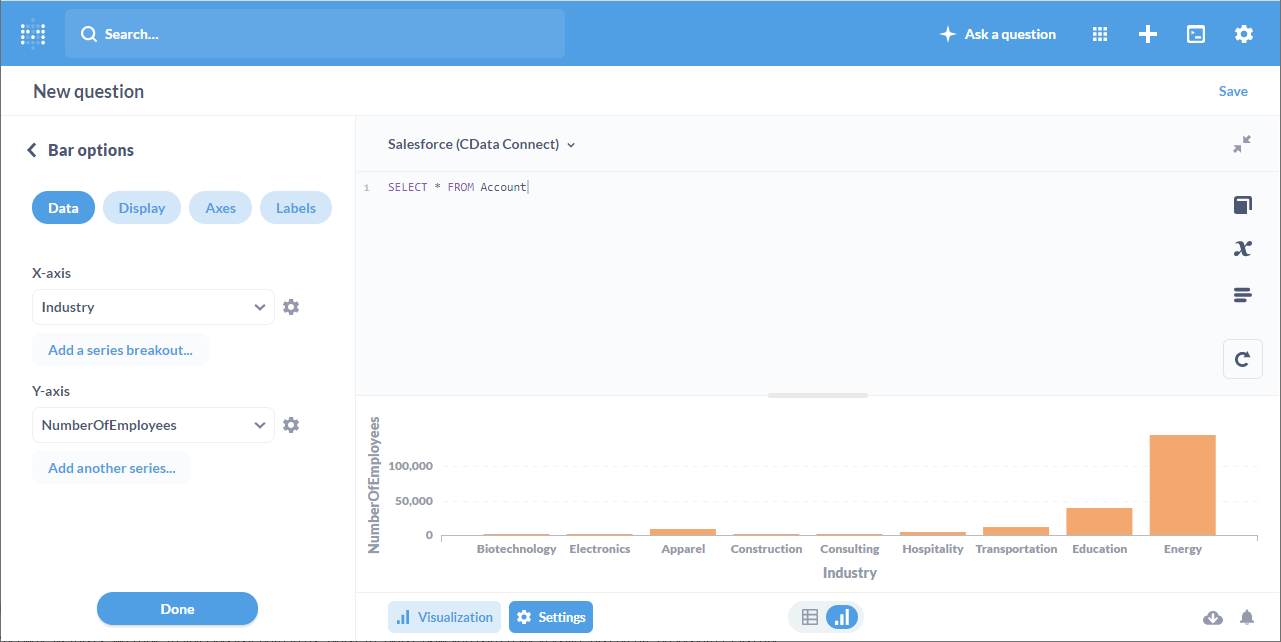Model Context Protocol (MCP) finally gives AI models a way to access the business data needed to make them really useful at work. CData MCP Servers have the depth and performance to make sure AI has access to all of the answers.
Try them now for free →How to integrate Metabase with HCL Domino Data
Use CData Connect Cloud to connect to live HCL Domino data and create an interactive dashboard in Metabase from HCL Domino data.
Metabase is an open source data visualization tool that allows users to create interactive dashboards. When paired with CData Connect Cloud, users can easily create visualizations and dashboards linked to live HCL Domino data. This article describes how to connect to HCL Domino and build a simple visualization using HCL Domino data.
CData Connect provides a pure cloud-to-cloud interface for HCL Domino, allowing you to easily integrate with live HCL Domino data in Metabase — without replicating the data. Connect looks exactly like a SQL Server database to Metabase and uses optimized data processing out of the box to push all supported SQL operations (filters, JOINs, etc) directly to HCL Domino, leveraging server-side processing to quickly return HCL Domino data.
Configure HCL Domino Connectivity for Metabase
Connectivity to HCL Domino from Metabase is made possible through CData Connect Cloud. To work with HCL Domino data from Metabase, we start by creating and configuring a HCL Domino connection.
- Log into Connect Cloud, click Connections and click Add Connection
![Adding a Connection]()
- Select "HCL Domino" from the Add Connection panel
![Selecting a data source]()
-
Enter the necessary authentication properties to connect to HCL Domino.
Connecting to Domino
To connect to Domino data, set the following properties:
- URL: The host name or IP of the server hosting the Domino database. Include the port of the server hosting the Domino database. For example: http://sampleserver:1234/
- DatabaseScope: The name of a scope in the Domino Web UI. The driver exposes forms and views for the schema governed by the specified scope. In the Domino Admin UI, select the Scopes menu in the sidebar. Set this property to the name of an existing scope.
Authenticating with Domino
Domino supports authenticating via login credentials or an Azure Active Directory OAuth application:
Login Credentials
To authenticate with login credentials, set the following properties:
- AuthScheme: Set this to "OAuthPassword"
- User: The username of the authenticating Domino user
- Password: The password associated with the authenticating Domino user
The driver uses the login credentials to automatically perform an OAuth token exchange.
AzureAD
This authentication method uses Azure Active Directory as an IdP to obtain a JWT token. You need to create a custom OAuth application in Azure Active Directory and configure it as an IdP. To do so, follow the instructions in the Help documentation. Then set the following properties:
- AuthScheme: Set this to "AzureAD"
- InitiateOAuth: Set this to GETANDREFRESH. You can use InitiateOAuth to avoid repeating the OAuth exchange and manually setting the OAuthAccessToken.
- OAuthClientId: The Client ID obtained when setting up the custom OAuth application.
- OAuthClientSecret: The Client secret obtained when setting up the custom OAuth application.
- CallbackURL: The redirect URI defined when you registered your app. For example: https://localhost:33333
- AzureTenant: The Microsoft Online tenant being used to access data. Supply either a value in the form companyname.microsoft.com or the tenant ID.
The tenant ID is the same as the directory ID shown in the Azure Portal's Azure Active Directory > Properties page.
![Configuring a connection (Salesforce is shown)]()
- Click Create & Test
- Navigate to the Permissions tab in the Add HCL Domino Connection page and update the User-based permissions.
![Updating permissions]()
Add a Personal Access Token
If you are connecting from a service, application, platform, or framework that does not support OAuth authentication, you can create a Personal Access Token (PAT) to use for authentication. Best practices would dictate that you create a separate PAT for each service, to maintain granularity of access.
- Click on your username at the top right of the Connect Cloud app and click User Profile.
- On the User Profile page, scroll down to the Personal Access Tokens section and click Create PAT.
- Give your PAT a name and click Create.
![Creating a new PAT]()
- The personal access token is only visible at creation, so be sure to copy it and store it securely for future use.
With the connection configured, you are ready to connect to HCL Domino data from Metabase.
Connect to CData Connect from Metabase
After creating the virtual database, navigate to your Metabase instance. Use the SQL Server interface to connect to Connect Cloud.
- Navigate to the administration screen (Settings -> Admin) and click "Add Database" from the "Databases" tab
![Adding a new database connection to Metabase.]()
- Configure the connection to Connect Cloud and click "Save"
- Database type: Select "SQL Server"
- Name: Name the connection (e.g. "HCL Domino (Connect Cloud)")
- Host: tds.cdata.com
- Port: 14333
- Database name: The name of the connection you just created (e.g. Domino1)
- Username: A Connect Cloud username (e.g. user@mydomain.com)
- Password: The PAT for the above Connect Cloud user
- Click to Use a secure connection (SSL)
![Configuring the connection to Connect Cloud.]()
Execute HCL Domino Data with Metabase
Once you configure the connection to Connect Cloud, you can query HCL Domino and build visualizations.
- Use the "Write SQL" tool to retrieve the HCL Domino data
![Click the 'Write SQL' button.]()
- Write a SQL query based on the HCL Domino connection in CData Connect Cloud, e.g.
SELECT Name, Address FROM ByName WHERE City = 'Miami'
![Collected data (Salesforce is shown).]()
- Navigate to the "Visualization" screen, choose a visualization, and configure the visualization
![Collected data (Salesforce is shown).]()
More Information & Free Trial
At this point, you have built a simple visualization from HCL Domino data in Metabase. You can continue to work with live HCL Domino data in Metabase just like you would any SQL Server database. For more information on creating a live connection to HCL Domino (and more than 100 other data sources), visit the Connect Cloud page. Sign up for a free trial and start working with live HCL Domino data in Metabase today.






